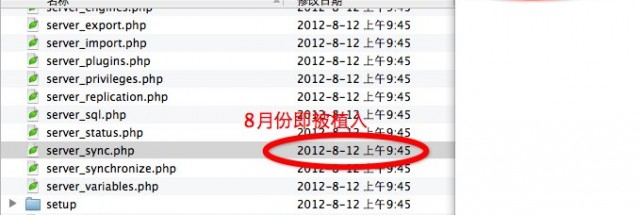

- #Webmin phpmyadmin not found how to#
- #Webmin phpmyadmin not found install#
- #Webmin phpmyadmin not found update#
- #Webmin phpmyadmin not found password#
- #Webmin phpmyadmin not found free#
#Webmin phpmyadmin not found password#

append the following line to sources.list:.curl -sL v0.33.8/install.sh -o install_nvm.sh.
#Webmin phpmyadmin not found install#
#Webmin phpmyadmin not found update#
sudo apt-get update & sudo apt-get install apache2 -y.sudo apt-get install sqlite3 libsqlite3-dev.To change the locale settings with an interface Use the following commands to fix your locale environment: Please remember to add a specific rule for each of the programs you install and also to enable the firewall at the end of this tutorial. Therefore, we will create a new user with sudo access and disable the root account:įor enhanced security, we could use Public Key Authentication with disabled password authentication.Īlso, it is important to setup the firewall rules and enable the firewall: Using the root account directly is not recommended, as it has way too extended privileges in the system.

Except for the OS, we do not need anything else. To begin, we need a fresh and clean droplet.
#Webmin phpmyadmin not found free#
to enable monitoring – which is free of charge, at least at the moment – via SSH in a droplet, use the following command:.So, please do replace that with your user wherever you have it in the commands I am now going for the Digitalocean DNS, as they have a nicer interface. Also, you have a choice between using the Freenom provided DNS or the Digitalocean DNS, which are both free of charge.
#Webmin phpmyadmin not found how to#
You may want to review your installation of phpMyAdmin, MySQL, Apache or PHP here.įor other errors and troubleshooting of phpMyAdmin, read this article.The current article contains resources and ideas on how to setup an Ubuntu 16.04 droplet on Digitalocean, together with Webmin, LAMP – where M might 🙂 stand for MariaDB – and SSL from letsencrypt.įirst of all, for the domain name you could use a free domain name provided by (.tk. You shall not get 404 Error Page Not Found.ĭone! Comments and issues are welcome as always. If above fails then you can directly copy-paste the following sudo ln -s /etc/phpmyadmin/nf /etc/apache2/conf.d/nf sudo /etc/init.d/apache2 reloadĤ. You will have option to select Apache webserver to configure. Connect to VPS, server etc and type this sudo dpkg-reconfigure -plow phpmyadminĢ. This may work on older servers, Ubuntu OS and other apache versions. One more but old method was to symlink the httpd configuration. Different OS have different locations and also different commands to restart the services. If this doesn’t work out for you then you must reconsider the path of Apache config file. Try to access phpMyAdmin control panel using domain or IP in this fashion /phpmyadminħ. Now restart the httpd (apache) by using command sudo service httpd restartĦ. If not then find your virtual server host configuration and copy-paste the following Alias /phpmyadmin '/var/www/html/phpmyadmin/'ĥ. Most probably you will find configuration of your server. This file contains all the directives needed for a server to redirect, process or identify different name based servers etc.Ĥ. Now, copy-paste this command sudo nano /etc/httpd/conf/nfģ. Connect to your server using SSH (Putty etc).Ģ. It doesn’t happen with every server and apache config. This problem is mostly caused due to improper directives or misconfiguration in Apache. This error appears when you try to access phpMyAdmin control panel / dashboard using domain or IP address in this way To have it working properly is must for every webmaster. This is real nasty thing and irritates nearly everyone. So, you tried to access phpmyadmin and got ‘phpMyAdmin Error 404 Page Not Found’ or ‘page not found’? Centos, internet tips tricks, linux, ubuntu


 0 kommentar(er)
0 kommentar(er)
